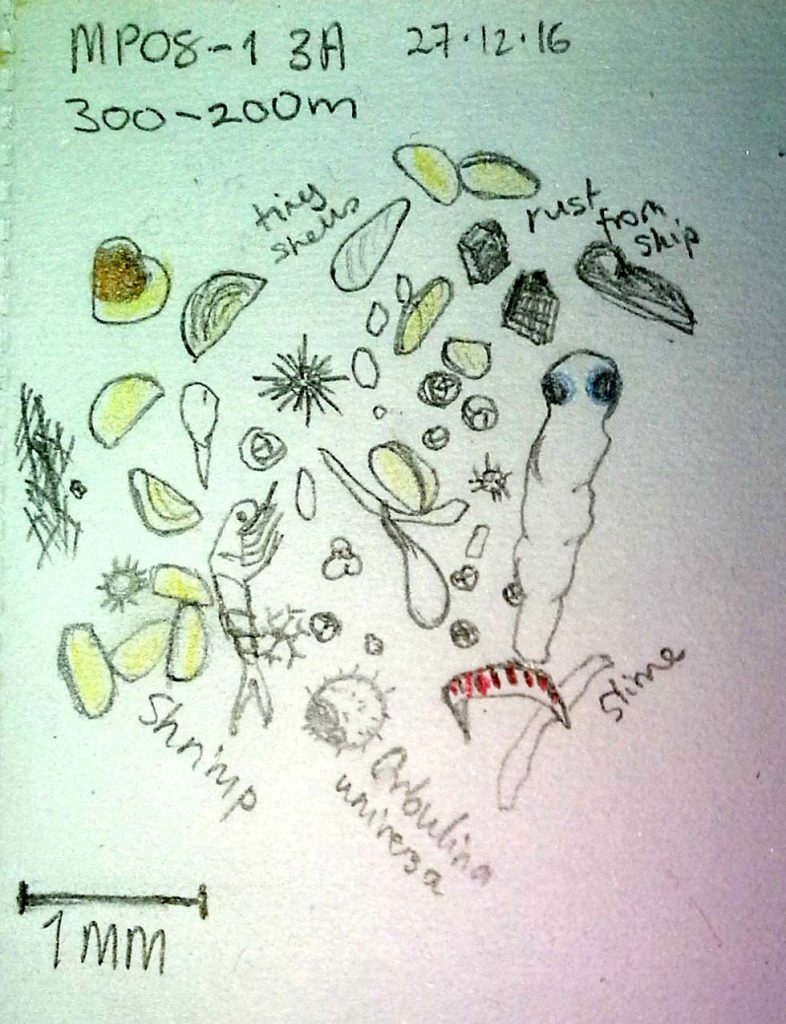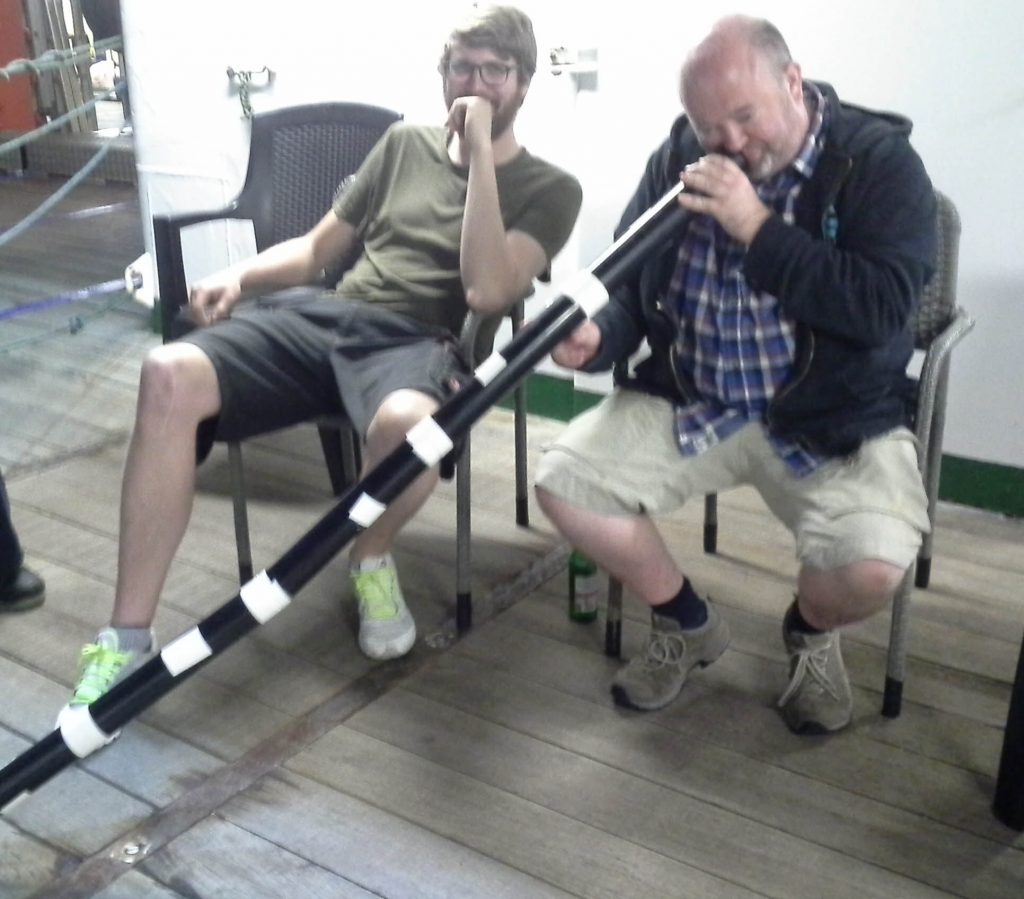We are passing the halfway point of the cruise. Today is day 16, another 15 days to go until we arrive in the Falklands. The first two weeks seem to have, on the one hand, passed very quickly, while at the same time it seems like ages ago that we left Cape Town.
The wind and seas are becoming calmer again compared to a couple of days ago when we had quite a lot of swell and waves breaking over the deck of the ship. That day, in the plankton net sample from 300 to 200 m water depth – amongst the usual marine slime, tiny shells, shrimp and endless G. scitula – were a couple of live specimens of O. universa. G. scitula habitually lives at these depths, but I haven’t seen live universa in such a deep sample before, it is a species which usually lives at the very surface of the ocean. Maybe they got mixed down out of their depth by the windy weather into a layer from which they could not return. I wonder how long the shells take to sink compared to how long the organic tissue lasts. And how long they lived at the surface and how their day would have gone if they hadn’t been interrupted by our net. Such are the speculations which arise when picking miniscule shells out of marine mush for hours.

Plankton net sample from 300-200 m water depth, mainly shrimps, salps and tiny shells.
© Heather Johnstone
Non organic things appear in the samples also. Long white fibres could come from the nets we use to catch the samples, chips of rust and blue paint come from the ship. I have also seen little bits of plastic in the samples, a tiny bit of green mesh, a hard white piece and occasional thick black fibres are a few of the traces of human detritus that have turned up. A group of the post-graduate students are doing a project on the micro-plastics in the ocean. When I see plastic I feel pleased that they have something to work with, though of course this is not really a good thing.
We create our own detritus too, in the pursuit of oceanographic data. But at least some of the used tubes from one of the instruments, the XBT, have got a second chance. It turns out one of our group, Jeroen, can play the didgeridoo. On hearing this, the ever-helpful student Max disappeared for a bit, returning with a didgeridoo made from discarded XBT tubes. I remain deeply impressed, first about the construction of this thing and secondly that someone can play it. Truly there is a lot of talent on this ship. The next performance of the RV Meteor choir, Mete(ch)or, will be on new year’s eve, and includes the ship’s captain on electric guitar. The words of La Bamba ‘Yo no soy marinero, soy capitan’ will be unusually appropriate.

Enjoying some digeridoo music on deck. The instrument is constructed from discarded XBT tubes. © Heather Johnstone
Heather Johnstone, RV Meteor, 34o 30 South, 34o 52’ West.
30th December 2016
